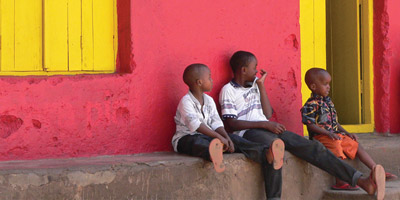I’ve written separately about the Berlin museums, and also about the shop selling products relating to German traffic light men. In the same complex as the shop, there’s also a museum focused on Anne Frank.
I read Anne’s diary while doing A-Level German, and knew about her story in general. I also knew of the museum in Holland, based in the house where she and her family were in hiding.
What I didn’t know was that Anne was born in Berlin. Even more interestingly, the museum in Berlin told her story from the point of view of her friend Hannah, who she met on their first day at a Montessori kindergarten. Seeing materials from the school, photographs of them playing together, all served to remind me that Anne’s story began before the family went into hiding.
Probably the most affecting part was seeing video footage of Hannah, describing what it was like to be friends with Anne. We tend to think of the girl who wanted to be a writer; we also know that her diaries were all she was able to put across to the world. Hannah also describes the naughty Anne, the one who stood up to the boys at school; less of the ‘quiet saint’ we may have in our minds.
For me, the most shocking part was where Hannah discovered, after being moved to a concentration camp, that Anne was there too. Despite the danger of being caught, the two friends managed to ‘meet’, whispering through a partition of straw and barbed wire. At that point, Anne’s mother and sister had died, and she thought her father was also dead. Although Hannah encouraged her to keep going, Anne seemed to have lost hope, and was dead within a month.
Hannah reflected on the situation – Anne and her story became famous world wide, but she didn’t live to see it. Hannah’s experience of occupation was perhaps just as typical as Anne’s, or others at that time – and somehow she lived.
Perhaps she felt not unlike Anne’s father, who did in fact survive, and who in some ways came to know Anne more through finding and publishing her diaries. You can be tremendously proud of and affected by someone who writes openly about such difficulties. But you’d far rather you had them with you, and not just their words on a page.
A fitting end to the exhibition was a separate, smaller section, based on a competition where children were encouraged to write about relatives who had been affected by war.
Some wrote about their own situations – one fifteen year old who survived the Yugoslav conflict noted that he had experienced war for thirteen of those fifteen years. Some wrote about experiences their grandparents had that are now less well remembered than that of Anne Frank – one grandparent survived the siege of Leningrad, another witnessed the annexation of Kaliningrad, to the north of Poland.
The stories were powerful – and made more so by the children’s own efforts in retelling them in their own words, and illustrating them, or including photographs where those were available.
A little more indication if I needed it of Berlin’s complex history, and of Germany’s attempts to engage with these difficult topics today.
